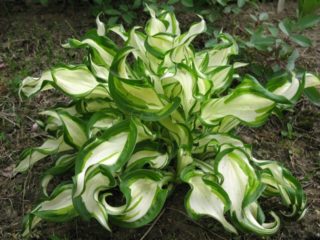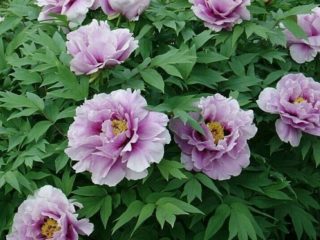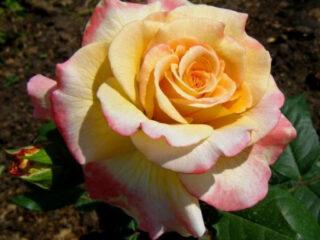Content
Peony Barbara is a variety of Polish selection that is almost 50 years old. It tolerates frost well, so it can be grown even in Siberia. Produces lush pink double flowers. It is suitable for garden decoration and lasts a long time when cut, so it is often used for making bouquets.
How the variety appeared
Peony Barbara was bred in Poland during breeding work in the mid-1970s. The culture passed tests and went on public sale in 1977. This is a classic pink peony with a very voluminous pompom-shaped flower. It has fairly good winter hardiness, so it has spread to various Russian regions, including the northern ones.
Variety Barbara belongs to the milky-flowering peonies. They got their name due to the characteristic color of the petals. Moreover, we are talking only about wild varieties that are found in nature - they are really pure white. Based on this species, many varieties and hybrids of different shades have been obtained, among which pink is one of the most common.
Description of the herbaceous peony Barbara
Peony Barbara is a perennial shrub 80-90 cm high. The peduncles are straight, quite strong, do not bend, therefore do not spread out to the sides, and do not need support. The leaves are dark green, medium in size, classic trifoliate in shape, appear in large numbers and create a beautiful background.
Peony flowers are a rich pink color, slightly darker at the edges and lighter in the middle. Petals with wavy edges, numerous, grow in several rows, which gives volume. The inflorescences are large, pompom-shaped, terry type. They reach 14-16 cm in diameter and look beautiful both in single plantings and in compositions.

Peony Barbara blooms at the end of May
Timing and flowering period
Peony Barbara belongs to the varieties of the mid-early group. It produces flowers from the last ten days of May to mid-June. Sometimes there are delays of up to 7-10 days. This may be due to lack of sun, cool spring, or improper care. Although if the weather is warm and the soil is fertile, flowers may appear in mid-May.
Advantages and disadvantages
Peony Barbara is one of the best in terms of beauty and low maintenance requirements. This is a classic pink flower, lush, with graceful petals and a very strong aroma. The plant's winter hardiness is high - it can withstand up to -34 degrees in open ground, which corresponds to zone 4. It is undemanding in terms of care, so even a gardener without experience can grow it.

Peony Barbara produces large flowers with a strong aroma
Pros:
- voluminous inflorescences;
- nice smell;
- stand for a long time when cut;
- peduncles are strong and do not need support;
- good winter hardiness;
- easy care.
Minuses:
- must be grown in the sun;
- may suffer from diseases.
How to plant
Peony Barbara grows well only in open, sunny areas. When growing in the south, it is recommended to create slight shading from bushes or fences. The flowerbed should be located on a small hill so that there is no flooding after rain, snowmelt or heavy watering.
Barbara, like other varieties of peonies, grows well in fertile and loose soils with a slightly acidic reaction. Loam is optimal. But if the soil is depleted, it can also be prepared for planting, for example, by adding compost or complex mineral fertilizer. It happens that the soil is too dense - then vermiculite, sawdust or sand are added to it.
Peony Barbara does not produce spreading bushes, so it can be planted quite densely, at a distance of 1-1.5 meters. The landing process looks like this:
- Dig a hole 60-70 cm deep and wide.
- Small pebbles are placed on the bottom (layer height 10 cm), you can also sprinkle a little sand.
- Fill up fertile soil.
- Dig in the seedling and compact the soil a little. It is necessary that the root collar goes to a shallow depth - a maximum of 5 cm. At the same time, it is also not worth leaving it on the surface.
- Water the Barbara peony with pre-settled water and then lay sawdust, peat or other mulch.
How to care
Caring for the Barbara peony is not much different from other representatives of the milky-flowering species:
- water weekly, adult bushes a little less often (once every 10 days), and more often in drought;
- feed with nitrogen fertilizers in the spring, and with complex mineral or organic fertilizers during the formation of buds and flowering;
- periodically loosen the soil and do weeding;
- If necessary, trim off faded inflorescences.

In order for the flowers to last as long as possible, it is necessary to regularly water and feed the bush.
Preparing for winter
The winter hardiness of the shrub reaches -34 degrees. Although in some regions, for example, in Siberia and the Urals, temperatures can drop lower. Therefore, the specifics of preparing for winter depend on the climate of the area. In the south you don’t have to cover it; in the middle zone it’s enough to sprinkle it with dry leaves. In the northern regions, you need to lay a high layer of mulch 8-10 cm. This can be straw, hay, sawdust.
But there are also general rules of preparation. At the end of October, a week before the first frost, the Barbara peony is pruned. It is necessary to completely remove the above-ground part so that the shrub can survive the cold normally. Therefore, they cut it almost flush, leaving 2-3 cm. It is advisable to treat the sections with a solution of potassium permanganate or sprinkle them with wood ash. In March, the mulch must be removed so that the buds begin to grow in a timely manner.
Reproduction methods
Peony Barbara reproduces well by vegetative methods:
- dividing the bush;
- layering;
- cuttings
Only mature bushes can be divided, and it is advisable to do this every 3-4 years. In August or September, the plants are dug up and the rhizome is cut into several parts, sprinkled with wood ash and transplanted to a new place.
To propagate the Barbara peony by layering in the spring, several healthy branches are bent and dug in, leaving only the top. They water it regularly, give it fertilizer, and in the fall they cut it off from the mother bush and move it to a new place.
You can try to propagate the Barbara peony with young cuttings.Several branches are cut into 10-15 cm fragments, and in early June they are planted in fertile soil or a 1:1 mixture of peat and sand. Cover with a jar, water generously, ventilate, and after a month the shelter is removed. In the fall, they are transplanted to a permanent place, pruned and mulched thoroughly.
Disease and pest control
Peony Barbara is not prone to disease, although due to excessive watering and rainy summers it can suffer from fungal and bacterial diseases. If the bush is infected, it, as well as healthy plantings, must be treated with fungicide solutions:
- "Maksim";
- "Profit";
- "Fundazol";
- "Abiga Peak".
Sometimes the Barbara peony suffers from an invasion of aphids, thrips, and spider mites. To combat them, proven drugs are used:
- "Decis";
- "Fitoverm";
- "Match";
- "Colorado".
Application in landscape
Peony Barbara is very bright and lush, so it is usually planted in the most prominent places. Flowerbeds look beautiful next to the house, against the backdrop of the lawn, not far from the recreation area, on the shore of the country pond. The main ways to use plants in garden design are:
- Monoclumba.
- Landing in an open area.
- Single occupancy option.
Conclusion
Peony Barbara is one of the best pink varieties. It is undemanding to care and tolerates frost and drought well. However, for abundant flowering in spring and early summer, it should be fed and watered regularly. Otherwise, the rules of care are quite simple.
Reviews from flower growers about Peony Barbara











